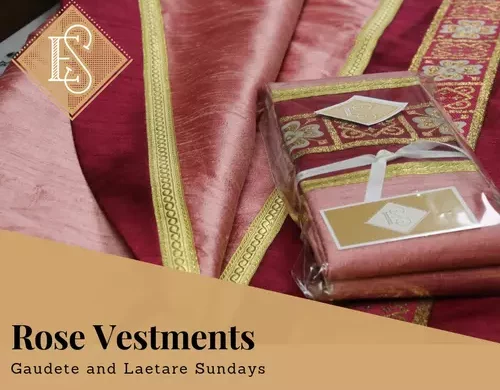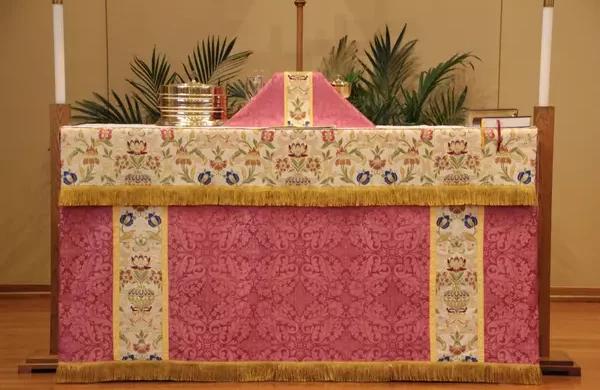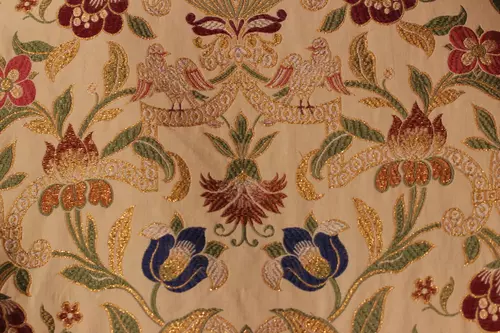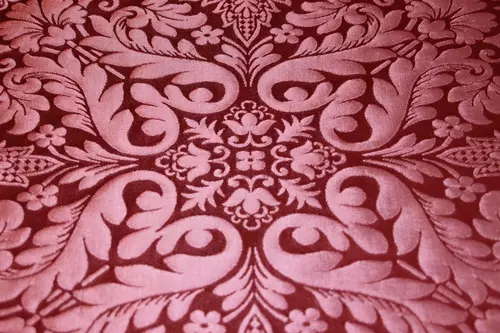
Rose vestments are used for two Sundays in the church year. Rose vestments are worn during the seasons of Advent and Lent. Gaudete Sunday is celebrated during the Season of Advent. Laetare Sunday is celebrated during Lent.
Like this:
Like Loading...

Gaudete is a special Sunday in Advent when the readings have a lighter tone in the middle of what is a Penitential Season. This is the third Sunday in Advent when a rose or pink candle is lit on the Advent wreath. The color change reminds us that Christmas is near. We only need to wait a bit longer and our Alleluia will resound once again. Lent is also a Penitential Season of the church year. Laetare is on the fourth Sunday in Lent
Like this:
Like Loading...
Gaudete Sunday is the third Sunday in Advent and is a reprieve in this season–which by nature is a penitential season. Gaudete Sunday gives us a glimpse of the joy that awaits us and lightens the mood–one way this is done is with the change of the vestments from violet or blue to a rose color. Gaudete is the plural present active imperative of the Latin verb “to rejoice.”
Like this:
Like Loading...

Using Rose Vestments during Advent and Lent varies among differing church bodies. The New Liturgical Movement has some information on the historical use of Rose Vestments within the Catholic Church. The Lutheran Church Missouri Synod’s view on Rose Vestments is slightly different. If a Rose Vestment Set is desired or planned for your church, be sure to check with your pastor or bishop concerning appropriate use and guidelines for liturgical colors.
Like this:
Like Loading...

Ecclesiastical Sewing created Rose Vestments for Gaudete and Laetare Sundays. The set included an Altar Frontal, Pulpit Fall, Stole, Maniple, Chasuble, and optional Chalice Veil and Burse. Fabrics like Rose Florence Brocade and Verona Lurex Tapestry with symbolic bird motifs were chosen. The Altar Frontal featured intricate Ecclesiastical Embroidery. The Verona Tapestry’s rich design minimized the need for extensive embroidery, with selected trimmings completing the set.
Like this:
Like Loading...

Pattern repeats in Ecclesiastical fabrics might sound scary, but fear not! Let’s take a lovely brocade, like the Florence from the UK. It’s got motifs like floral stars and stylized flowers. The key is the “pattern repeat.” For Florence, it’s 14 1/2″ both lengthwise and widthwise. So, if you start at a point on a motif and follow it until you hit the same point on the next identical motif, that’s one repeat. Simple! It’s like a beautiful puzzle waiting to be solved.
Like this:
Like Loading...






You must be logged in to post a comment.